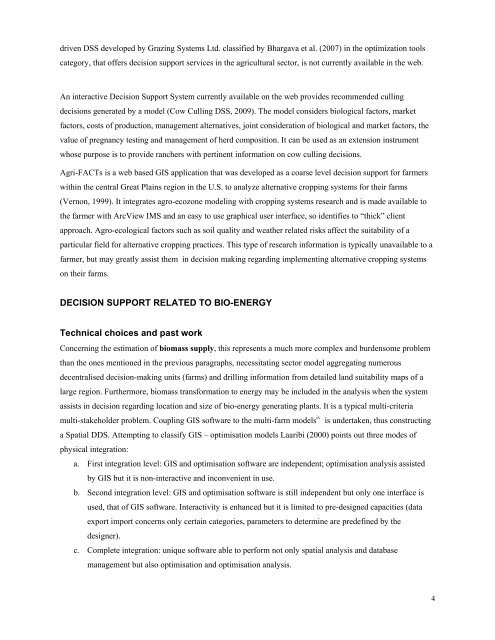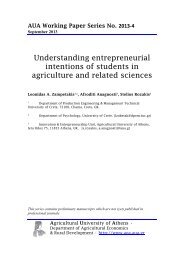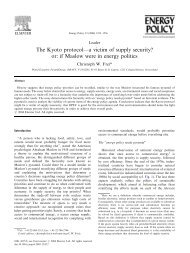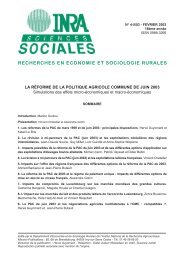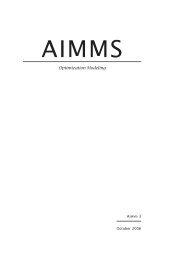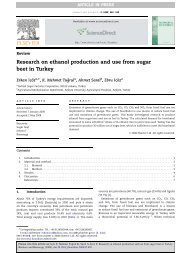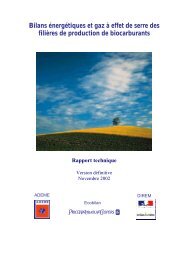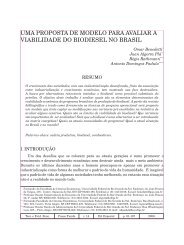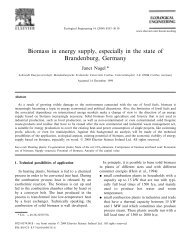A Web-based Spatial DSS for estimating biomass-to- energy supply ...
A Web-based Spatial DSS for estimating biomass-to- energy supply ...
A Web-based Spatial DSS for estimating biomass-to- energy supply ...
Create successful ePaper yourself
Turn your PDF publications into a flip-book with our unique Google optimized e-Paper software.
driven <strong>DSS</strong> developed by Grazing Systems Ltd. classified by Bhargava et al. (2007) in the optimization <strong>to</strong>ols<br />
category, that offers decision support services in the agricultural sec<strong>to</strong>r, is not currently available in the web.<br />
An interactive Decision Support System currently available on the web provides recommended culling<br />
decisions generated by a model (Cow Culling <strong>DSS</strong>, 2009). The model considers biological fac<strong>to</strong>rs, market<br />
fac<strong>to</strong>rs, costs of production, management alternatives, joint consideration of biological and market fac<strong>to</strong>rs, the<br />
value of pregnancy testing and management of herd composition. It can be used as an extension instrument<br />
whose purpose is <strong>to</strong> provide ranchers with pertinent in<strong>for</strong>mation on cow culling decisions.<br />
Agri-FACTs is a web <strong>based</strong> GIS application that was developed as a coarse level decision support <strong>for</strong> farmers<br />
within the central Great Plains region in the U.S. <strong>to</strong> analyze alternative cropping systems <strong>for</strong> their farms<br />
(Vernon, 1999). It integrates agro-ecozone modeling with cropping systems research and is made available <strong>to</strong><br />
the farmer with ArcView IMS and an easy <strong>to</strong> use graphical user interface, so identifies <strong>to</strong> “thick” client<br />
approach. Agro-ecological fac<strong>to</strong>rs such as soil quality and weather related risks affect the suitability of a<br />
particular field <strong>for</strong> alternative cropping practices. This type of research in<strong>for</strong>mation is typically unavailable <strong>to</strong> a<br />
farmer, but may greatly assist them in decision making regarding implementing alternative cropping systems<br />
on their farms.<br />
DECISION SUPPORT RELATED TO BIO-ENERGY<br />
Technical choices and past work<br />
Concerning the estimation of <strong>biomass</strong> <strong>supply</strong>, this represents a much more complex and burdensome problem<br />
than the ones mentioned in the previous paragraphs, necessitating sec<strong>to</strong>r model aggregating numerous<br />
decentralised decision-making units (farms) and drilling in<strong>for</strong>mation from detailed land suitability maps of a<br />
large region. Furthermore, <strong>biomass</strong> trans<strong>for</strong>mation <strong>to</strong> <strong>energy</strong> may be included in the analysis when the system<br />
assists in decision regarding location and size of bio-<strong>energy</strong> generating plants. It is a typical multi-criteria<br />
multi-stakeholder problem. Coupling GIS software <strong>to</strong> the multi-farm models iv is undertaken, thus constructing<br />
a <strong>Spatial</strong> DDS. Attempting <strong>to</strong> classify GIS – optimisation models Laaribi (2000) points out three modes of<br />
physical integration:<br />
a. First integration level: GIS and optimisation software are independent; optimisation analysis assisted<br />
by GIS but it is non-interactive and inconvenient in use.<br />
b. Second integration level: GIS and optimisation software is still independent but only one interface is<br />
used, that of GIS software. Interactivity is enhanced but it is limited <strong>to</strong> pre-designed capacities (data<br />
export import concerns only certain categories, parameters <strong>to</strong> determine are predefined by the<br />
designer).<br />
c. Complete integration: unique software able <strong>to</strong> per<strong>for</strong>m not only spatial analysis and database<br />
management but also optimisation and optimisation analysis.<br />
4


